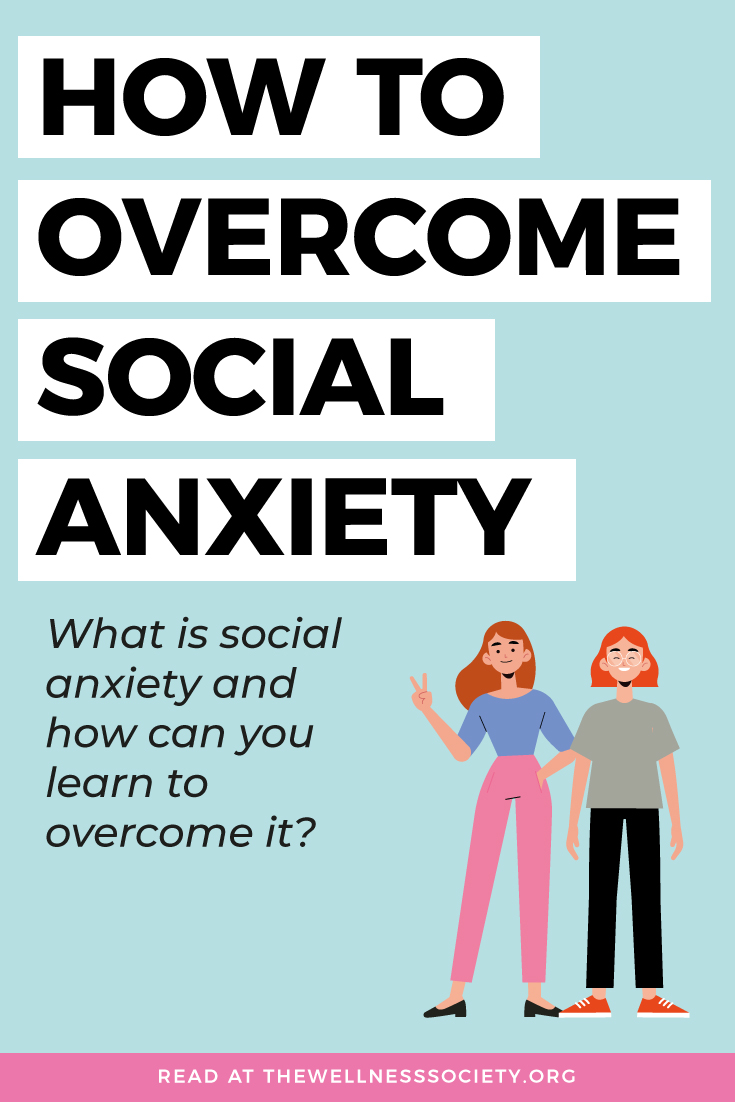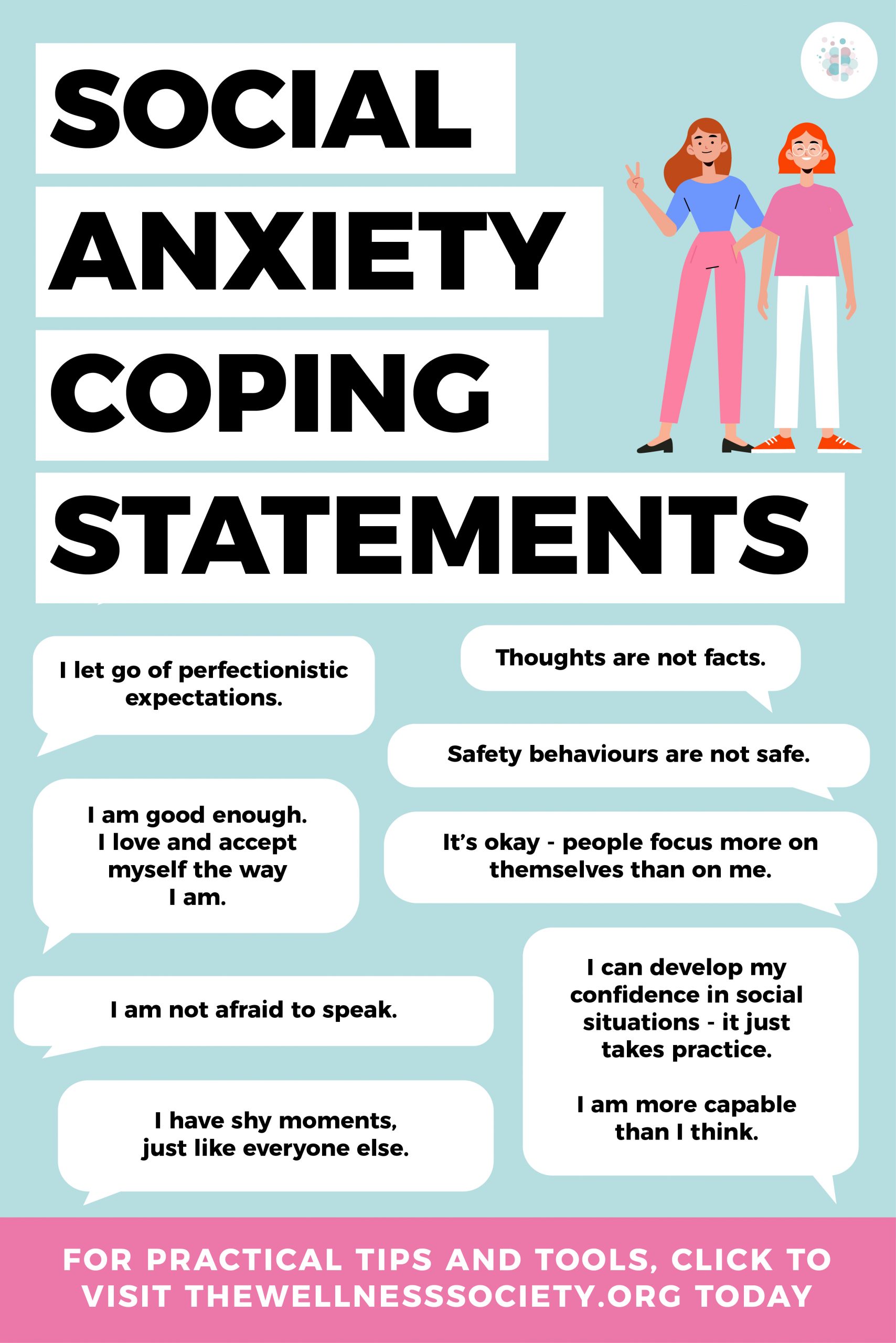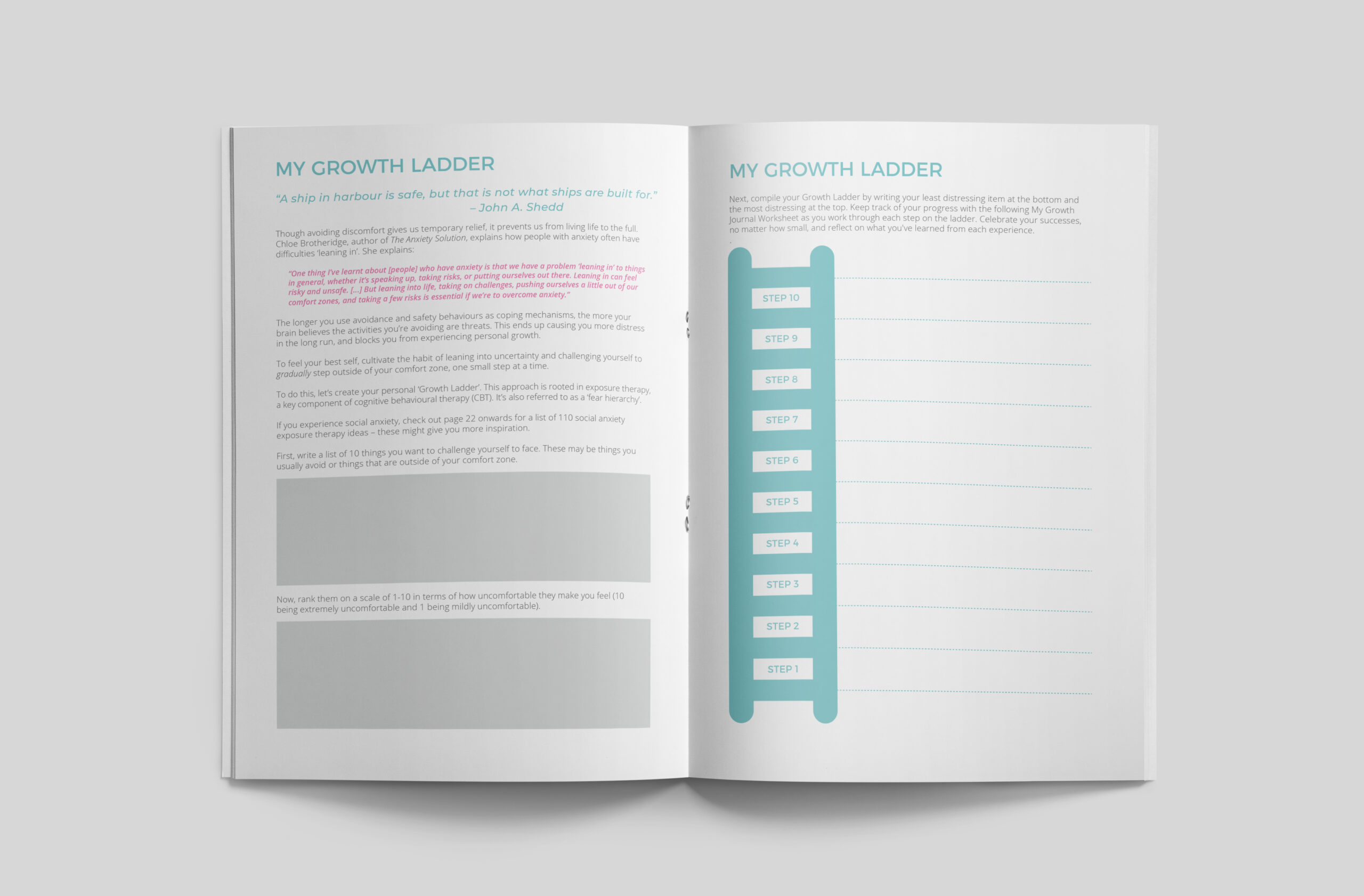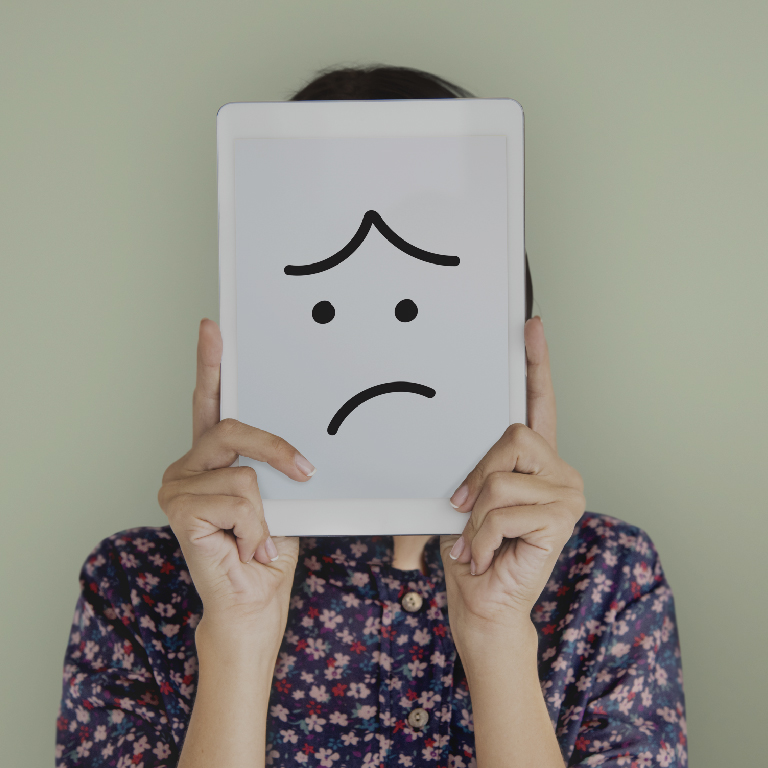Anxiety is a big umbrella term.
It includes a variety of experiences, ranging from health anxiety and generalised anxiety to social anxiety and specific phobias.Each experience of anxiety comes with its own set of challenges. Social anxiety is, as the name suggests, linked to feeling anxious in social situations. But it’s also more than that. And, as with most instances of problematic anxiety, social anxiety self-perpetuates. Learning how to cope with social anxiety entails understanding how the vicious cycle is created and what you can do about it.
What Is Social Anxiety?
Social anxiety refers to experiencing symptoms of anxiety when faced with ordinary day-to-day social interactions. This means that people struggling with social anxiety find it difficult to interact with others – particularly people they don't feel familiar with.
Social anxiety sufferers generally dread meeting in groups of people and will avoid situations where they need to interact with people they don't know well. They may also struggle with everyday tasks such as making phone calls, running into acquaintances, meeting with friends or employers and other seemingly benign events. The experience can become utterly debilitating.
What Fuels Social Anxiety?
The common denominator for most social anxiety sufferers is that they believe that others are negatively judging them and that they are not good enough in social situations.
This belief often translates into fear of embarrassing themselves or offending someone. And it’s this (false) belief that lies at the heart of social anxiety.
To protect themselves from embarrassment and harsh judgement, people struggling with social anxiety will employ what psychologists call safety behaviours. These behaviours are aimed at avoiding the inevitable humiliation or foot-in-mouth experience they believe they're doomed for.
Common safety behaviours include:
- Not saying much
- Avoiding eye contact
- Shrinking into the background to avoid being noticed
Safety Behaviours Are Not Safe
The problem with safety behaviours is that they actually create more of what they’re trying to prevent.
It’s likely that people are wondering why you aren’t saying much, or why you’re hiding in the corner. The attempted act of becoming invisible actually makes you more noticeable than simply blending in with a comment or two.
Safety behaviours become the fuel to social anxiety because they provide evidence for your worst fears. For example, that person who was concerned about your shyness and was looking at you now becomes your proof that people are judging you.
Alternatively, the fact that no one spoke to you (because you didn't speak much to them) becomes your evidence that no one enjoyed your company. These situations reinforce the (false) belief that you’re not good enough in social situations.
The Danger of “What If” Questions in Social Anxiety
As if this weren’t enough, the persistent “what if” questions that precede any social interaction add gallons of gasoline to the social anxiety fire:
- “What if no one likes me?”
- “What if I stutter?”
- “What if I say the wrong thing and they all hate me?”
- “What if I forget their names?”
- “What if I mess up?”
The surge of these questions before any social interaction starts the unhelpful process of imagining the worst possible outcomes.
The scary thing is that the brain doesn’t realise that you’re creating hypothetical situations. It can’t discriminate between what’s real out there and what’s imagination in here.
As a result, it fires off an anxious response because the imagined outcomes are far from desirable. The more “what if” questions you ask, the more anxiety you create. The more anxiety you create, the more likely you are to use safety behaviours. And so we have a vicious cycle of self-perpetuating social anxiety.
How to Cope With Social Anxiety
Understanding the relationship between the core beliefs, safety behaviours and “what if” questions is the first step to changing the narrative of social anxiety. Given that social anxiety is perpetuated by beliefs and thoughts, it stands to reason that we need to shift these in order to cope better in social situations. Keep reading to discover four key strategies to reduce social anxiety.
1. Reframe Perfectionistic Expectations
People who suffer from anxiety often set very high standards for themselves. When they aren’t able to meet these unrelenting standards, they label themselves as “not good enough”. This kind of black-and-white thinking lowers their self-esteem and keeps them in the vicious cycle of social anxiety.
If this is you, it’s time to reframe your expectations!
If you struggle to make conversations in big groups of people, don’t expect yourself to take centre stage. Remember that public speaking is an extremely common fear – not many people actually feel confident doing it. Do you tend to compare yourself to the most socially confident, extroverted people? Try to focus more on the behaviour of the average person.
Everyone feels socially awkward from time to time. Instead of labelling yourself as a shy person, remind yourself that you have shy moments, just like everyone else.
Reframe your expectations. Aim to be able to make small talk with just one other person, or to laugh at any jokes being told and not shrink to the background. Reframing unrealistic expectations will help you build confidence as you manage to meet your new found standards for social engagements.
2. Reframe “What If?” Questions
“We suffer more in imagination than in reality.” – Seneca
“What if” questions are the source of endless anticipation and anxiety. These questions generally tend to wonder about negative and undesirable outcomes, and they set your brain up to feel more anxious than is necessary.
When you change the nature of the question, you also change your brain’s response to that question. Instead of asking “what if no one likes me?” you could ask “what if I find just one person to talk to?”
Can you feel the difference when you change the nature of the question?
3. Re-think Safety Behaviours
Remember, safety behaviours are not safe! They reinforce social anxiety and keep the vicious cycle perpetuating.
When you avoid saying anything (because you’ve convinced yourself you have nothing to offer to the conversation), you end up contributing nothing to the conversation. You do exactly what you feared you would, and the social anxiety wins.
However, when you let go of some of the safety behaviours, you give yourself an opportunity to prove yourself wrong. Resist the urge to hide in the background at the next social gathering. Even if you don’t manage to say much, try being part of the conversation and participating with non-verbal gestures such as nods and smiles. This will help you feel included and give others a chance to interact with you too.
You could also identify and rehearse some conversation starters so that you feel a little more confident greeting people in social situations. Remember that safety behaviours such as avoiding eye contact or not saying anything only serve to reinforce the feeling of social isolation and anxiety.
4. Consider Exposure Therapy
Alongside safety behaviours, avoidance is a key feature of social anxiety. This refers to the tendency to steer clear of situations that provoke anxiety. Exposure therapy tackles this avoidance directly, aiming to desensitize you to your fears by gradually exposing you to what you’re afraid of.
Exposure therapy is one of the most effective evidence-based treatments for anxiety, helping millions of people worldwide.
For a deep dive into how to use exposure therapy to overcome social anxiety, check out this article.
Summary
- Social anxiety refers to experiencing symptoms of anxiety when faced with ordinary day-to-day social interactions.
- To overcome social anxiety, remember to reframe the expectations you have of yourself in social situations. Make sure your goals are realistic and not perfectionistic.
- Notice when you’re caught in a flurry of “what if” questions. Take control of your mind by changing the question to consider a more positive outcome.
- Escape the vicious cycle of social anxiety by gradually reducing your use of safety behaviours and overcoming avoidance.
- Be kind to yourself during this process and try to connect with other people with similar struggles.
Get Practical Worksheets for Overcoming Social Anxiety
The GROW Planner in The Mental Wellbeing Toolkit includes the following worksheets:
- 110 Social Anxiety Exposure Ideas. A huge list of ideas and journal prompts to help you come up with your own.
- My Growth Ladder. A worksheet to record your exposure therapy plan, mapping steps onto a ‘growth ladder’.
- My Growth Journal. A worksheet to keep track of your experiences and progress, helping you engage in effective self-reflection.
- 7 Day Exposure Challenge. Review the 110 social anxiety exposure ideas and create your own week-long challenge.
- 4 Week Exposure Challenge. A worksheet which gamifies the whole exposure therapy experience – you assign 1, 2, or 3 points for easy/medium/difficult challenges and strive to beat last week’s score!

About Diante
Diante is a clinical psychologist and certified anxiety coach offering online support for women who are fed up with anxiety getting in the way of their relationships, parenting or personal dreams. You can find out more about her at www.theunstuckinitiative.com or follow her on Instagram @the.intentional.psychologist or Facebook: www.facebook.com/intentionalpsychologist
Pin For Later





